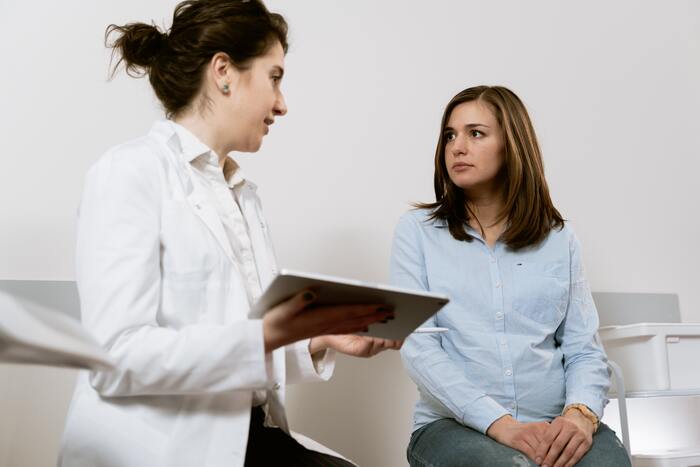Endometriosis, a new indication for in vitro fertilisation?
Endometriosis affects one in ten women. The two main symptoms are pain and infertility, presenting the clinician with a conflict of interests: on the one hand, the treatment of pain is mainly based on blocking ovarian function, and on the other hand, women who wish to become pregnant need to maintain ovarian function. It is therefore essential to discuss the patient’s priorities.

What are the key aspects?
There are four fundamental aspects to consider in the therapeutic approach to these patients:
A good anamnesis and exhaustive ultrasound study allows us to make a reliable diagnosis, we must consider that 40% of infertile women have endometriosis, we should not underestimate its prevalence.
Its presence in the pelvis has a toxic effect in vivo, both on oocytes and embryos due to inflammatory mediators present in the cavity. The application of in vitro fertilisation (IVF) allows us to ensure that oocytes, sperm and embryos are not exposed to these toxicity-promoting factors (1). In fact, there is evidence from several studies that the quality of oocytes obtained by IVF in women with endometriosis is not altered. Therefore, the Juneau study (2) in a total of 305 patients with endometriosis undergoing IVF with pre-implantation genetic study on a total of 18800 blasts, found no difference in the rate of aneuploidy with respect to the control group of women of similar age without endometriosis.
The presence of the disease has a deleterious effect on the endometrium generating a hyperestrogenic state and progesterone resistance that alters normal endometrial development, thus having a negative impact on implantation. However, this effect can also be overcome by delayed transfer, a strategy known as freeze all. Thus, Bourdon’s group (3), when comparing ongoing gestation rates in fresh transfers and cryotransfers in women with endometriosis, found a significant increase thanks to the delayed transfer strategy, which blocks ovarian function, preventing the high levels of estradiol present in the follicular fluid from worsening the inflammatory environment in the pelvis with a negative impact on the endometrial level.
And finally, the need for surgery or not. It is now understood that excision of the lesions in young women with good ovarian reserve, without tubal factor and absence of male factor can implement the possibility of natural conception for a period of 12-18 months, after which, if there is no gestation, IVF is recommended. Stimulation and subsequent insemination cycles, which only worsen the disease, are not recommended. In other cases, surgery is only considered if there is hydrosalpinx or very large endometriomas that prevent oocyte retrieval.
Otherwise, surgery is not recommended in the presence of ovarian endometriomas as it only contributes to a decrease in ovarian reserve and this effect can be even more deleterious than the disease itself.
Would you like to know more about our treatments? We encourage you to make an appointment at our fertility clinic so that we can explain it to you in detail and answer all your questions.

Written by:
Dr. Elena Puente
Medical director of Clinica Fertia
Bibliography
1.De Ziegler D, Pirtea P, Pharm MP, Carbonel E, Ayoubi JM. Toxic pelvic cavity in endometriosis, a new frontier for medical therapies. Fertil Steril 2018;110: 644-645.
2.Juneau C, Kraus E, Werner M, Franasiak J, Morin S, Patounakis G. Patients with endometriosis have aneuploidy rates equivalent to their age matched peers in the in vitro fertilization population. Fertil Steril 2017;108:284-288.
3. Bourdon m, Santulli P, Maignien C, Gayet V, Pocate-Chenel K, Marcellin L, Chapron C. The deferred embryo transfer strategy improves cumulative pregnancy rates in endometriosis-related infertility: a retrospective matched cohort study.PLos ONE 13(4):e0194800.
